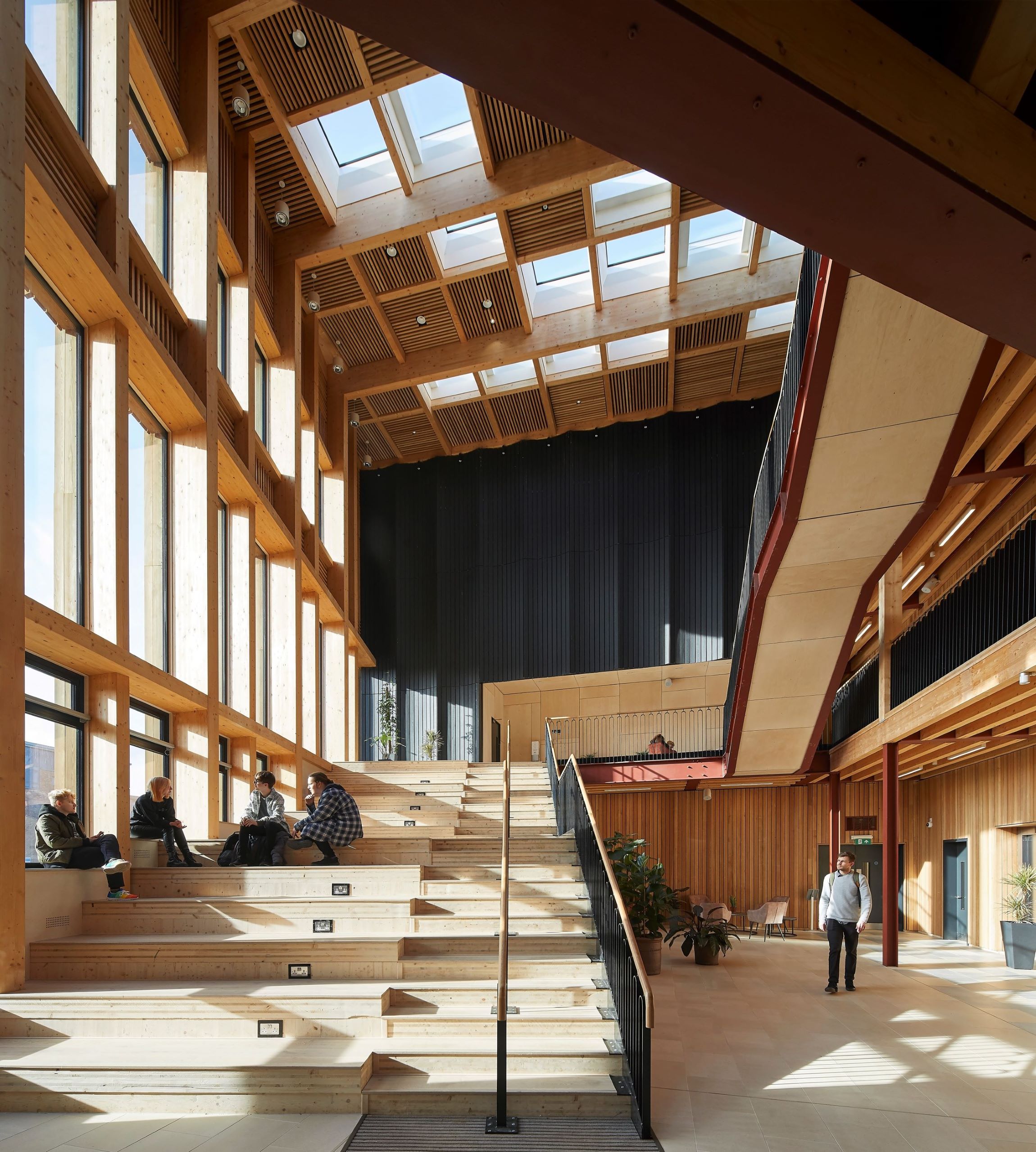Buckley Gray Yeoman, PAD Studio, Tate + Co and SOM share their insights on the key issues hindering the transition to regenerative architecture.
Gardens at Campus Reading International by Buckley Gray Yeoman. (Credit: Dirk Lindner)
Buckley Gray Yeoman
“The majority of BGY’s work is private commercial space, which is dictated by asset managers and developers. With a lack of financial evidence or growth metrics for social value, biodiversity wellbeing, we struggle to admit these into the brief with any meaningful capacity, let alone a regenerative one. The client brief is often primarily commercially driven, meaning without significant cultural transformation, it’s difficult to present a feasible business case for regenerative design.
Then there are the points so succinctly covered by AD’s Building Blocks manifesto. We lack the necessary legislation required to enable us to deliver regenerative projects- whether that is as an enforcer, of reducing embodied carbon, or an enabler, of constructing with natural materials and timber. But overall, this is rooted in the lack of climate literacy in the industry and beyond, a grasp of the severe situation we find ourselves in, and a drive to act.”
Community Benefit in Action. (Credit: PAD studio)
PAD Studio
“The amount of time it takes (as a small business) to complete the accreditation process, and the cost. B-corp was a huge investment in time and finance. It is one thing to practice all the great things (which we have been doing for many years) but to demonstrate and prove compliance is a lot of paperwork and most small businesses don’t have the time and money to make this ‘official’ – it is much easier for larger practice.”
York St John University Creative Centre. (Credit: Hufton + Crow)
Tate+Co
“Whilst one barrier to achieving regenerative practice is the available finance to deliver multiple positive outcomes, I think ahead of this there needs to be better understanding about what tools and techniques are required to achieve this ambition in an effective and economic manner.
It could be perceived that a focus on money is detrimental to the creation of positive outcomes. We believe it is more about a rebalancing of finance and how the budget is distributed across the design and construction process. Expenditure on early survey and consultation can have a cost neutral beneficial impact at later stages in the process. The projects that achieve the greatest positive outcomes are those where we pursued a regenerative design process from the outset.”
“Client commitment is key to achieving a truly regenerative outcome. Clients with a clearly defined ethical position tend to be much more aligned with regenerative practice.
As part of our Regenerative Design process, we ensure our designs can be adapted in the future. For example, at York St John University Creative Centre we have already laid out multiple future scenarios for the main teaching block.
We have been creating projects that substantially improve biodiversity for many years. The York St John University Creative Centre produced a 53 per cent BNG improvement figure in a central York City site.”
This image depicts SOM’s Urban Sequoia, a systems approach to thinking about cities as ecologies that can be reconfigured to achieve dramatic reductions in whole life carbon, reframing the built environment as a solution for the climate crisis. (Credit: SOM | Miysis)
Skidmore, Owings & Merrill
“The climate emergency is challenging not just architects but everyone across the built environment value chain, demanding us to ask tougher questions and ensure that the selection of massing, materials and construction methodology minimise planetary impact. Whilst the objective is clear, the reality poses several, significant barriers, which include:
- Varying regional attitudes to sustainability and a lack of climate change legislation across governments that set consistently ambitious targets;
- A risk-averse insurance industry that threatens the ability to implement new construction methods and innovations in the building industry;
- A lack of government incentivisation to pursue innovation which affects the ambition of clients and their funding partners;
- A lack of collaboration across the value chain;
- And as a result, a lack of shared, environmental performance data available for industry-wide learning.”
Visit the Regenerative Architecture Network to read responses from all of the 68 practices who participated in the Regenerative Architecture Index


















